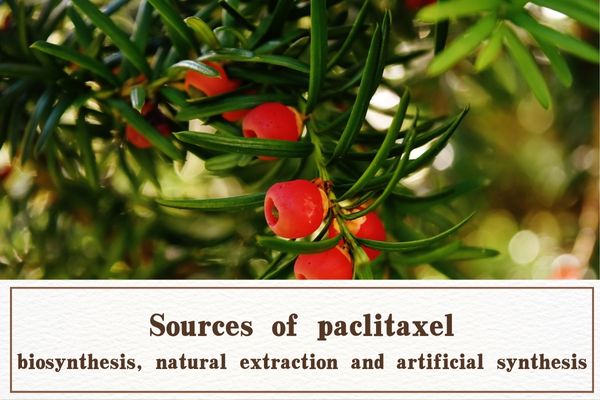Paclitaxel, as a diterpenoid alkaloid with remarkable anti-cancer activity, has attracted wide attention in the field of medicine since it was isolated from the bark of taxus chinensis in 1971. The purpose of this paper is to elaborate the biosynthetic pathways, natural sources and synthetic methods of paclitaxel in order to provide a comprehensive and in-depth reference for the research and application of related fields.
1. Biosynthetic pathway of paclitaxel
The biosynthesis of paclitaxel is a complex process, which mainly involves terpenoid synthesis pathway and phenylalanine pathway. In plants, the synthesis of paclitaxel begins with isopentene pyrophosphate (IPP) and dimethylpropylene pyrophosphate (DMAPP), and goes through a series of enzymatic reactions to produce paclitaxel. In this process, key enzymes such as Taxadiene synthase play a crucial role. In recent years, with the development of genetic engineering and synthetic biology, the biosynthetic pathway of paclitaxel has been reconstructed in microbial systems, providing new possibilities for sustainable production of paclitaxel.
Natural sources of paclitaxel
Taxol is mainly derived from Taxus genus, such as Taxus wallichiana var.chinensis and Taxus cuspidata. The bark, branches, leaves and seeds of these plants contain paclitaxel or its precursors. However, due to the extremely low content of paclitaxel in plants and the slow growth and limited resources of taxus plants, it is difficult to extract paclitaxel from natural sources to meet the growing market demand.
3. Synthetic method of paclitaxel
In order to solve the problem of the shortage of taxol resources, researchers have been exploring the synthetic method of taxol. At present, the synthetic synthesis of paclitaxel is mainly divided into two ways: total synthesis and semi-synthesis.
1, total synthesis: The total synthesis of paclitaxel involves a number of complex chemical reaction steps, such as cyclization, oxidation, reduction, acylation, etc. Although the total synthesis method can achieve the preparation of paclitaxel on the laboratory scale, it is difficult to apply to industrial production due to its cumbersome steps, low yield and high cost.
2. Semi-synthesis: The semi-synthesis method takes paclitaxel precursor substances extracted from Taxus plants as raw materials, and finally generates paclitaxel through a series of chemical transformations. Compared with the direct extraction of precursor substances, the semi-synthetic method has the advantages of wide source of raw materials, high yield and relatively low cost. At present, a variety of semi-synthetic paclitaxel methods have been reported, some of which have been successfully applied to industrial production.
Iv. Conclusion and Prospect
As a natural product with significant anticancer activity, the source of paclitaxel has been the focus of attention in the field of medicine. By understanding the biosynthetic pathways, natural sources and synthetic methods of paclitaxel, we can support the sustainable production and application development of paclitaxel. In the future, with the continuous development of emerging technologies such as synthetic biology and metabolic engineering, it is expected to achieve efficient synthesis of paclitaxel in microbial systems, so as to further meet clinical needs and promote the development of related industries. At the same time, the in-depth study of paclitaxel and its analogues is also expected to provide more inspiration and possibilities for the discovery of new anticancer drugs.
Note: The potential benefits and applications presented in this article are derived from the published literature.
Post time: Feb-04-2024
